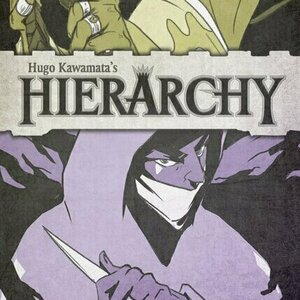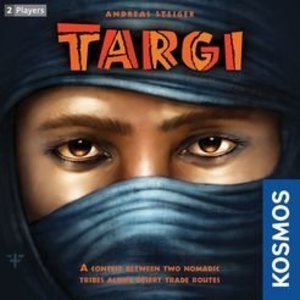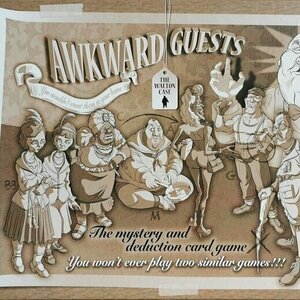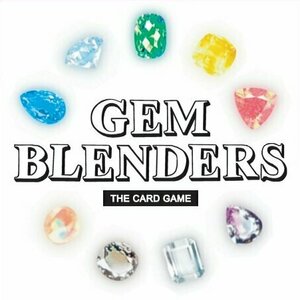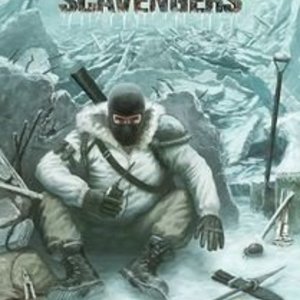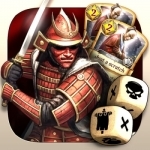
Warbands: Bushido
Games and Entertainment
App
Warbands:Bushido is an online miniatures board game with cards, miniatures, dice and beautiful...

Roja Directa TV
Sports and Entertainment
App
This application lets you follow all sporting events live and direct. With Roja Directa you'll be...

Housing Bank Mobile Banking
Finance
App
The Housing Bank provides you with its premium banking services right at your fingertips. The...
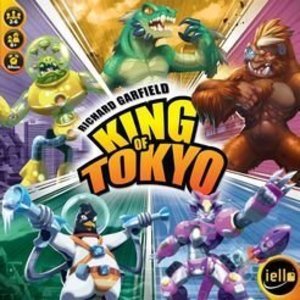
King of Tokyo
Tabletop Game
King of Tokyo is a game about being Godzilla, or one of several other silly super-monsters, crashing...

Point Salad
Tabletop Game
Point Salad is a fast and fun card drafting game for the whole family. There are over 100 ways to...
Purple Phoenix Games (2266 KP) rated Awkward Guests in Tabletop Games
Aug 6, 2020
Mr. Walton has been murdered! You have been called in to investigate and get to the bottom of this gruesome mystery. By interrogating the suspects and the household staff, searching for clues, and examining the crime scene, you must decide WHO the killer is, WHY did they commit the murder, and HOW it was done. There may or may not even be an accomplice that needs to be caught too. Put your deduction skills to the test as you work to be the first investigator to solve the case!
Disclaimer: I do not intend to rehash the entire rulebook in this review, but rather give a general overview of the rules and gameplay. To read the entire rulebook, check out the game at your FLGS or directly from the publisher! -L
Awkward Guests is a card game of hand management, trading, and deduction in which the players are trying to be the first player to solve the murder of Mr. Walton. The game is actually pretty simple to play. To start, each player receives a hand of 6 cards and a case tracking sheet. The cards will have one or more references (case information) on them, as well as a value of 1-3 points, depending on the reliability of the information presented on the card. On your turn, you will ask for information about two different references in which you are interested. The other players will then look through their cards, and offer some or all that pertain to the chosen references in trade to the active player. The active player may then choose a player with whom to trade, giving that player any number of cards, as long as their value equals or exceeds the value of the cards received in trade. Look at your new cards, make notes on your case tracking sheet, and play continues to the next player. After all players have inquired and traded cards, players have the opportunity to solve the mystery. You must know WHO, HOW, and WHY, and possibly the identity of the ACCOMPLICE depending on case difficulty, in order to solve the mystery. If nobody is ready to solve, everyone discards their hand down to 3, and draws new cards to a hand size of 6. A new round then begins, and play continues until one player successfully solves the mystery.
When you get down to it, Awkward Guests is easy to learn and play. It mostly consists of trading cards to learn information. That’s it. And that’s what makes it a great game, in my opinion. Although it feels more involved than regular Clue, the gameplay itself is very similar and that familiarity is reassuring. One thing that elevates Awkward Guests above Clue is the fact that it requires so much more strategy than original Clue. In Clue, when asking for information, you are asking 1 specific opponent for information, and they have to provide it if they have it. In Awkward Guests, you are able to ask all opponents for information, and they can offer as much or as little information as they want. It increases the amount of strategy required to play, and takes it from a simple grid movement memory game, to one that encourages deduction and compromise. Since players are trading cards, you never know who is holding what cards at any given time, and that makes it harder to pinpoint the information you may need. You can’t just memorize another player’s hand of cards, because on any given turn that hand has completely changed. Along those lines as well, you have to decide what information you are willing to trade, in hopes of receiving useful information in return. You don’t want to just trade back the same cards to the same players in an effort to stunt their investigation, because that could deter them from trading with you in the future. You have to decide when is the right time to trade, and what information you are willing to hand to your opponents, because you need to be receiving new information as well.
Another brilliant thing about Awkward Guests is the amount of replayability. Each case uses a different combination of cards, and with so many cards, that means that thousands of different game decks could be generated and played as individual cases. The game design and card system boasts a possible total of 3,600 case solutions, each reached through these different card deck combinations. No matter how many times you play, it is almost guaranteed that you will never play the same case twice. That being said, the biggest downside of Awkward Guests for me is the actual game setup and teardown. Each case deck requires certain cards, so that means to set up, you have to search through all 243 cards and pull out only those required for the selected case. And then after the game, you must sort them all back into their correct order. That just takes a bit of time, and makes it a game that can’t just be played on the fly.
One other downside for me when playing Awkward Guests are the player screens. Each player receives a screen to block their case tracking sheet from opponents. As you learn information, you write it on your sheet to help keep track of your notes and accusations throughout the game. The player screens are also reference sheets, providing much gameplay information to alleviate the need to reference the rulebook at every turn. The downside is that there is just SO MUCH information in the player screens. It is quite overwhelming, and honestly, makes the game seem more complicated and confusing than it really is. I appreciate the effort to provide that cheat-sheet, but it needs to be majorly edited and redacted to be truly useful.
Let’s talk components. The game comes with some high quality double-sided case tracking sheets, and nice sturdy cards and cardboard components. It’s pretty simple, but really gets the job done effectively. The artwork is pretty basic and the color scheme is mostly monochromatic. It may not be the most exciting game to look at, but the lack of colors makes it feel appropriately thematic.
Overall, Awkward Guests is a good step-up game from Clue. It requires strategy, deduction, and even though the game is ultimately competitive, selective cooperation is a key to success. As a huge fan of Clue as a child, I can definitely say that I am a fan of Awkward Guests as an adult. Originally printed in a different language, this game was brought to Kickstarter with an English version in 2018, and I am certainly thankful that the decision was made to reprint it in English! If you like deduction games with a twist, I would absolutely recommend giving this one a shot. Purple Phoenix Games gives Awkward Guests a mysterious 17 / 24.
Purple Phoenix Games (2266 KP) rated Gem Blenders in Tabletop Games
Oct 24, 2019
Gem Blenders is a competitive card game of upgrading (blending) heroes into stronger forces that will attack your opponent’s HP. The winner is the player who can decrease their opponent’s HP to zero first.
DISCLAIMER: We were provided a prototype copy of this game for the purposes of this review. As this is a preview copy of the game, I do not know if the final rules or components will be similar or different to what we were provided. Similarly, our copy came with two pre-constructed decks ready to duel. -T
To setup, players will need to construct their decks according to the construction requirements and limitations found in the rulebook. I will not be covering every rule found in the rulebook here, as the rules are very extensive. Once the four heroes per player are chosen, they must be arranged in a diamond pattern with the Left, Center, and Right heroes being on the “front line” and the Back hero being the sole back liner. Front line heroes can attack, but the hero in back cannot. Draw your opening hand of six cards and you are ready to play! Wait, you don’t like your initial draw? Ok then, shuffle back into your deck and draw a new set of six. You are ready to play!
On a turn a player will complete three phases. Firstly, draw a card. The next phase is to play cards from your hand. You are allowed to play one gem card per turn, so initially players will probably be attaching gems to heroes. Simply slide the gem card under the top of the hero card so that the colored gem graphic can be seen (see below). Other actions include attack (once per turn), blend or de-blend heroes, discard gems, activate hero effects, and play action cards.
Heroes will have effects printed on their cards with instructions on how to use them. You may use all four heroes’ effects if possible in any turn. Discarding gems is self-explanatory, and there are cards in the game that can activate or become more powerful depending on having gems in the discard pile. Action cards can help players manipulate their decks, search for specific cards, or even cancel another player’s action out of turn. They can be severely powerful, so there are strict limitations as to which Action cards and how many of them you may keep in your deck.
Blending heroes is a crux of the game and the way to make your heroes stronger in battle. By collecting the gems and attaching them to your heroes you are providing them with requirements for blending. You may only blend a hero when they have the appropriate gems attached to them according to the Blend card you wish to play. The hero then becomes the blended hero with the new effects and stronger Attack and Defense values. These are important stats for the Attack action. When a player Attacks, they choose which of their front line heroes they would like to send into battle (or all of them). The attackers may only attack the heroes directly opposite them on the table. So a Center hero may only attack the other Center hero across from them (in a 2 player game). Stats are simply compared and any attack power that remains undefended will be deducted from the defender player’s HP.
The last step of a turn is declaring your turn over. Then the next player may take their turn. Play will continue in this fashion until one player has zero HP and a winner is figured.
Components. To reiterate, we were provided a prototype copy of the game, so I will not comment on aspects that may be changed as a result of a successful Kickstarter campaign or through any stretch goals. I was given no information or scoops about what is planned, so I will merely comment on what I can here. This is a card game, and came to us in a box similar to that of the Tiny Epic series, but a bit smaller. It was enough for two constructed decks of 54 cards each and a couple reference cards. We were able to play the game right out of the box this way and that was very appreciated.
However, the card layout and art style of the game is where we have our issues. I recently turned 40 and, well, my eyesight isn’t what it used to be. When playing Gem Blenders, much of the game is about upgrading your forces and attacking your opponent(s). So when I look across the table at my opponent’s card, I want to be able to clearly see their Attack and Defense. Unfortunately, the text is so small in this version of the game that we were constantly asking each other what the A and D numbers were. Now, I mentioned earlier that we play and love DiceMasters as well, and that game also suffers from readability issues, so we can begrudgingly overlook that. I hope the finished version of the game addresses this and makes adjustments on visibility of important stats.
Also, the art style of the game just did not resonate with us at all. Again, it could be such that the art will change once the game is truly finished, but considering the cards we were provided, we were hoping for something a bit flashier or more polished. As you can see from the shots here on this review, the hero cards are all black and white, the gem cards have a colorful gem in the middle of the white background of the card with a smaller iteration of the gem in the upper portion of the card. The action cards are also the stark black and white similar to the hero cards. The blend cards feature different wallpapers with a somewhat improved illustration on the front. I found that I would rather see more of the text and battle stats than the illustrations of this game.
That all said, the game is really solid, the theme is interesting, and the game play is quite fun. If it looked better it would be a great option for a quick head-to-head CCG with an excellent and inventive theme. I do hope improvements to the game are planned, and if that’s the case then I will definitely be keeping it on my radar.
Purple Phoenix Games (2266 KP) rated Arctic Scavengers in Tabletop Games
Jun 12, 2019
Welcome to the Ice Age. No, not the animated movie. I’m talking about the real deal. Arctic Scavengers is set in a post-apocalyptic ice age where the cold is deadly and the resources are scarce. Any surviving humans have banded together to form ‘tribes’ that are competing for dominance in this frigid tundra. Can you and your tribe outwit your competitors to become the most powerful group? Or will a bigger and more menacing tribe overpower you and jeopardize your survival?
Disclaimer: The solo variant is only addressed in the Recon Expansion rules. There IS another expansion – HQ – but I have not used that content in my solo plays. This review only encompasses the Base Game and Recon Expansion.
Arctic Scavengers is a deck-building game where players are recruiting mercenaries to their tribes, searching for general resources, and battling other tribes for contested resources. Each turn has two main phases – Resource Gathering and Skirmish. During Resource Gathering, you play cards from your hand to either recruit new mercenaries or search the junkyard for general resources. Any remaining cards in your hand are then used during the Skirmish phase – where the player with the highest ‘fight’ value wins the contested resource for that round. At the end of the game, the player with the biggest tribe wins!
The solo variant has some minor differences, but is played essentially the same way. In a solo game, the contested resource cards are divided into 7 skirmishes to be encountered throughout the game. You can decide when to engage in a skirmish – it is not a requirement to encounter one each turn. After each skirmish, you either win and earn a contested resource, or lose and must permanently discard a card from your losing hand. The game ends when all 7 skirmishes have been encountered. The other difference is that each time you have to re-shuffle your discard pile, you must permanently remove the top card of your new deck from the game. Beyond those changes, the game remains the same. At the end of the game, all cards in your tribe are worth certain numbers of points – the goal is to beat your own personal best score.
In theory, this game sounds super cool! But when I actually got to play it solo, I was seriously underwhelmed. The game feels stagnant in the sense that there is no tension or urgency in your strategy. Since YOU get to decide when to engage in a skirmish, it is possible to just while away the time building up your deck until you have enough cards to beat every skirmish. Yes, you permanently discard a card each time you re-shuffle your discard pile, but if you are able to recruit one or two new cards each turn, it negates the penalty of discarding a card. The ability to choose when to engage in skirmishes is seriously over-powered because there is nothing stopping you from ignoring skirmishes and amassing cards for end-game scoring.
The other grievance I have with the game is regarding the Junkyard – the deck of cards where you ‘search’ for resources. The solo rules do not explicitly address setting up the Junkyard deck at all. So do you use one or not? Not having the Junkyard deck can be a serious hinderance – certain mercenaries cannot be recruited without certain resources. If you DO play with the Junkyard, how many cards do you use? Do you use the corresponding cards from the Base game and BOTH expansions? Only Base game and one expansion? Again, not explicitly addressed. I’ve tried using all of the Junkyard cards and that is difficult – there are just too many cards in that deck. I have gone entire games without coming across a necessary resource just because the size of the deck is too large (and I’m apparently a poor card-shuffler). The simple solution to this ambiguity would have been to just address it in the rulebook. But it’s not there, so I’m left guessing as to how I should set it up every time.
I really like the idea of this game. I really don’t like the solo variant though. Not having forced skirmishes makes the game extremely boring for me – I don’t really need a strategy since I can just recruit cards until I can draw a powerful hand. If there was a timeline for skirmishes – maybe something like “You must encounter one skirmish every other turn” – the game would be vastly different. I would actually need to strategize what cards to recruit and how I should delegate my cards on turns with a skirmish. In most games, I will reach a certain point where I choose to encounter a skirmish (that I know I will lose) just because I am starting to get bored. I appreciate the sentiment of including a solo variant, but this one just does not work.
Arctic Scavengers requires decent strategy and it offers good player interaction in group games. In a solo game, however, it is just imbalanced and boring. This is one solo variant that I would not recommend that you try, unless you are including drastic house rules.
https://purplephoenixgames.wordpress.com/2019/03/06/solo-chronicles-arctic-scavengers/
